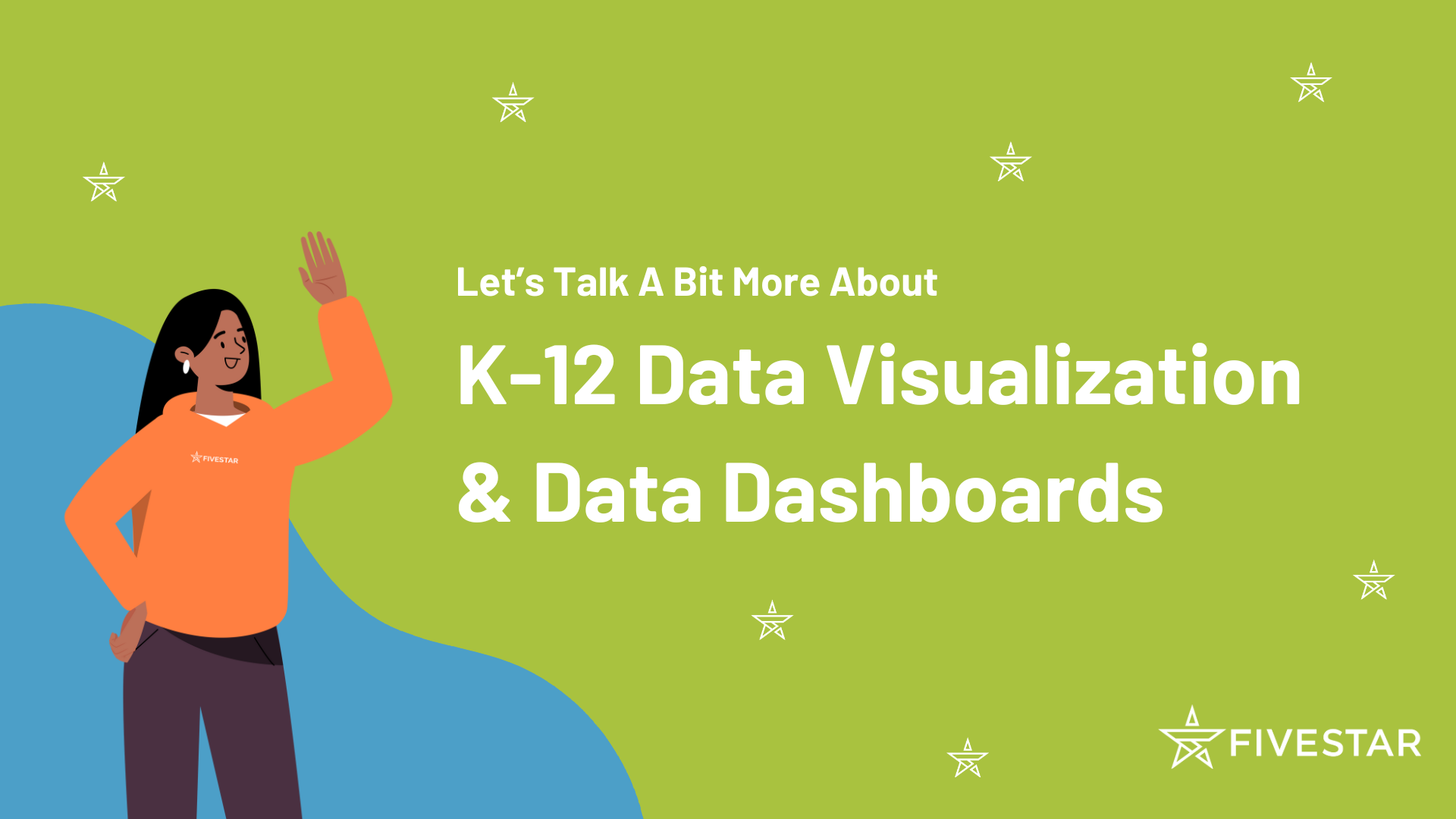Using K-12 Data To Make Informed Decisions for Teachers and Students
.png)
School districts today have access to vast amounts of data -- from student assessments and device usage to staff surveys and attendance. However, few people know how to use that data to make impactful changes for teachers and students. We spoke with Robert and Amy from Five Star to give us more insight.

Amy Cloyd
Director of Strategic Sales & Partnerships
Robert Laundrie
Senior Director of Software & MarketingHow do you think visualization plays a role in utilizing this data effectively?
Robert: School districts now have almost an endless supply of data that they're going to have access to. Where I think visualization helps districts is it allows you to tell a story with that data. It allows you to quickly spot trends and identify areas of need. For example, if you notice that 5th graders are consistently struggling with algebraic thinking in assessment scores, that could raise important questions. Is this an issue with the adopted resources, or is it a staff development issue? Visualizing your data helps guide these discussions and uncover areas that require attention.
Many people understand the importance of data in decision-making. What challenges do districts face, and how can Five Star help them?
Amy: A lot of the people we talk to know that data is important in decision-making. They want to use data, but many districts just don't have the time to do it themselves. That's where we come in as a partner. We not only help them gather all these different data points and consolidate them into one place, but we also provide powerful visualizations that they can act on. What sets us apart, I think, is that we go beyond just providing data; we help answer the question: "Now what?"
Robert: Adding on, we have something called data discoveries, which is essentially professional development in interpreting and reading your data. It's about asking the right questions and leading discussions on particular assessments, facilitated by one of our professional development staff. The data itself won't tell you anything unless you dive in and know what questions to ask. Data discoveries guide you through that process, adding significant value because, as we know, there's data everywhere. The key is knowing what to do with it.
How does having a central location for all this data impact districts?
Amy: Having all that data in one place, automatically updated after each assessment window, or continuously with tools like the Chromebook Engagement Dashboard, really provides that "light bulb" moment for districts. They realize how much easier it is to make informed decisions when everything is consolidated and accessible in real time.
Can you give an example of how districts can use these dashboards to analyze data over time?
Robert: One of the features of the dashboard is the ability to compare different points in time. For instance, you might look at data from the current test window and compare it with data from a previous window. This allows you to track growth or identify any regressions. It’s not just about looking at stagnant data but understanding whether you're moving the needle in the right direction. If the data is going in the wrong direction, it prompts questions like, "What changed? Why is this happening?" and it encourages deeper analysis.
How does the dashboard help teachers with individual students?
Amy: Each student has a data card that pulls in various pieces of information, such as demographics, special education services, guardianship details, recent assessment scores, interventions, attendance records, and behavior incidents. This comprehensive view allows teachers to quickly understand where a student stands overall, making it easier to tailor support to each student's needs.
It sounds like your approach goes beyond just providing a product. Amy, can you talk about the support that districts receive?
Amy: Absolutely. When districts purchase our product, they also gain access to a full support team. This includes an engagement specialist dedicated to ensuring they have all the resources they need and that everything is running smoothly. It's more than just buying a product; you're joining a family. If districts trust us and lean into our support, we can truly help them achieve their goals.
Thank you both for sharing your insights. It’s clear that your approach to data is not just about gathering information, but about empowering districts to make meaningful decisions that drive success.
---
This blog was written by a real human with assistance by generative AI.



-1.png?width=352&name=PD%20Blog%20May%20Banner%20(2)-1.png)

